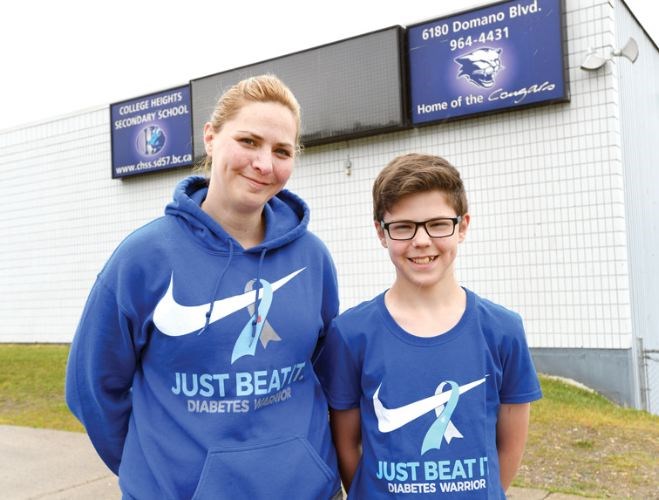He was very thirsty, lethargic and cranky.
It was so unlike happy little five-year-old Braeden that his mom, Katie Francis, took him to the doctor.
He was diagnosed with Type 1 diabetes.
"As a mom I had to follow my gut that there was something wrong with my son," Francis said.
Immediately after Braeden's diagnosis, he was hospitalized for a week to stabilize him as well as educate him and his family so they could learn how to properly manage the disease that affects not only children but adults as well.
"We had to learn to survive," Francis said. "We had to change our eating habits, learn about insulin care, how to give our son a needle - the whole works."
Type 1 diabetes is an autoimmune disease that occurs when the body's immune system attacks and destroys the cells in the pancreas that make insulin.
Unlike type 2 diabetes, type 1 is not linked to being overweight, a sedentary lifestyle or other factors.
The cause is unknown and it is not preventable.
Braeden, who is now 13 years old, is typically hospitalized each year for three to five days because when he gets sick, it's tough to make a full recovery, Francis said.
The disease does not just affect Braeden. The whole family feels it, including John, Braeden's father, and big brother, Matthew, 16.
"Type 1 is not a single child's illness," Francis said. "Type 1 is a family's illness."
Francis thinks these statistics are staggering: 86,000 children a year world-wide are diagnosed with type 1 diabetes and one in four people will be diagnosed as adults.
The rate of people getting diagnosed with the disease increased by 21 per cent between 2001 and 2009. In Canada, total health care costs for diabetes is expected to increase to more than $16.9 billion annually by 2020, she added.
Administration of insulin has changed drastically over the years and even in the few years Braeden has been living with type 1 diabetes, there's been advancements to regulate blood glucose levels and insulin intake.
For the last five years, Braeden was on an insulin pump that was attached to a monitor by a tube, which was not ideal for an active child.
Now he's on a tubeless insulin pump that is applied directly to the skin and offers a wireless monitoring system that can send crucial information to a smart phone or tablet.
"It's really amazing," Francis said. "To have a tubeless system is the most freeing thing a type 1 patient can have because you're not constantly worried about the tube that's connected to your pump that's connected to your skin. He's got so much more mobility and flexibility and we've never seen such great blood glucose results."
That offers more stability in Braeden's health.
"Before he was having between six and 12 shots a day," Francis said, recalling how she took a seven-month sabbatical from work because she would have to go to Braeden's school to give him his shots to help stabilize his glucose levels.
"Now he's on this continuous monitor - it's just beautiful."
To raise funds for research to find a cure, the Juvenile Diabetes Research Foundation is hosting the 2017 JDRF Telus Walk to Cure Diabetes on Sunday at College Heights secondary school.
"Type 1 is something that's not unheard of any more," Francis said. "And the walk is a place where the community can come together to support those families that are affected by type 1."
Check in is at 9 a.m. and the three-kilometre walk starts at 10 a.m. There are information booths, a lunch concession and children's activities on site.
For more information visit www.jdrf.ca.



